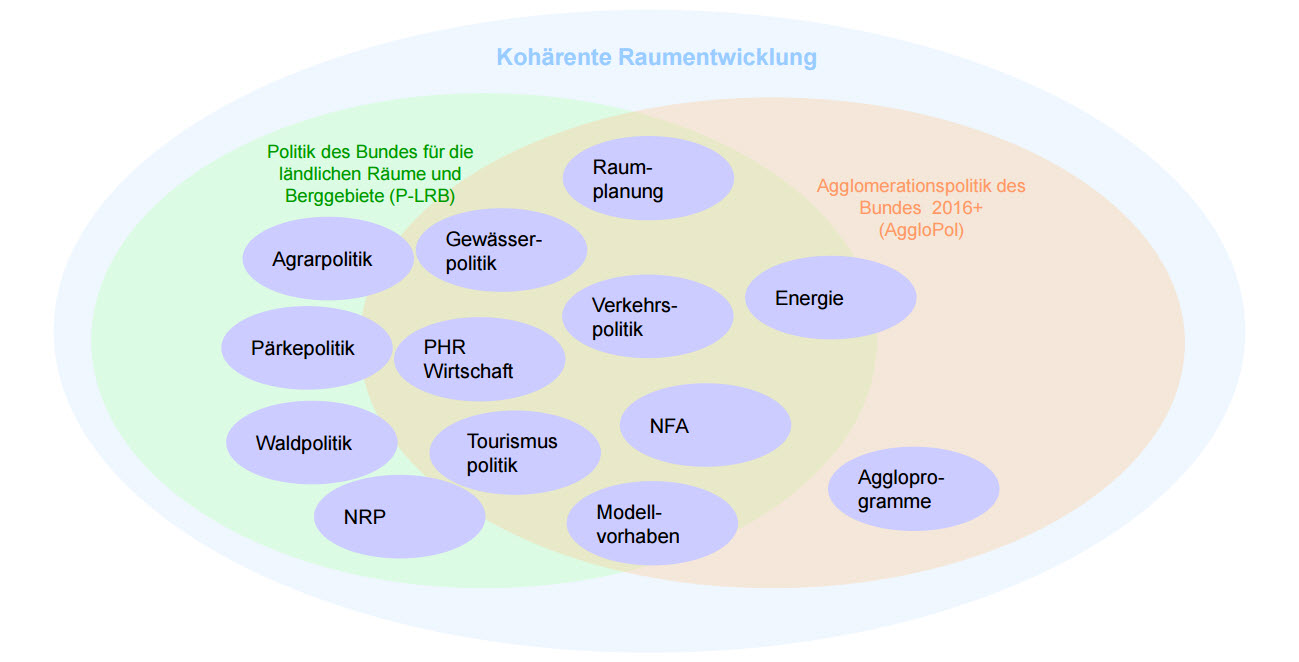Swiss spatial and regional development policies and programmes
Switzerland's population and economy are growing and occupying more and more space. At the same time, it is important to preserve diverse landscapes, biodiversity and important buildings. In order to better coordinate the various demands placed on space, all public and private actors must coordinate their spatial planning, programmes and projects more closely. The Swiss spatial concept (in German) serves as an orientation framework for sustainable, coherent spatial development. Important contributions to implementation are made by the various sectoral policies of the Confederation, which have an impact on the region, but also by corresponding policies and activities at cantonal, regional and communal level.

One of these sectoral policies is the New Regional Policy (NRP). It came into force in Switzerland on 1 January 2008. The Confederation and the cantons thus support the mountain regions, the wider rural areas and the border regions in their regional economic development. Within the framework of the NRP, Switzerland also participates in European Territorial Cooperation (ETC). The ETC is part of EU regional policy and serves the economic and social cohesion of the Community. It is aimed at promoting growth and employment in the regions in particular. Interreg, URBACT and ESPON are the ETC's cross-border support programmes.
In addition to the NRP and the ETC programmes, there are many other programmes and policies for regional development projects. A selection is available in the online tool «Finanzhilfen für die Regionalentwicklung» (in German). Further examples from the Federal Government and other institutions, organisations and private individuals can be found in the overview «Financial aid relevant to regional development» (in German).
With the «Coherent Spatial Development», the Federal Government has created a common understanding of action. Under this umbrella, the spatial challenges in the various regions are to be addressed in a holistic, coordinated and content-related manner within the framework of the various sectoral policies. Improved coordination and cross-thematic programmes and projects should contribute to achieving the objectives of the individual sectoral policies better and more efficiently. The agglomeration policy (AggloPol) and the policy for rural areas and mountain regions (P-LRB), as cross-cutting federal policies, make important contributions to coordination and cooperation and also contribute significantly to coherent spatial development.



